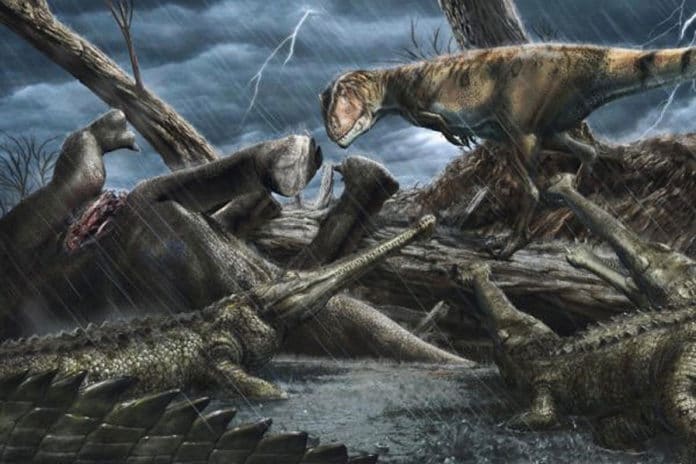A new study by the University of Portsmouth has provided a window into Africa’s Age of Dinosaurs. They reviewed almost 100 years of fossil vertebrates from an area of Cretaceous rock formations in south-eastern Morocco, known as the Kem Kem Group.
At that time, the region was home to an extensive river system filled with many different species of aquatic and terrestrial animals.
Fossils from the Kem Group incorporate three of the enormous predatory dinosaurs ever known, including the saber-toothed Carcharodontosaurus (over 8m long with enormous jaws and, since quite a while ago, serrated teeth up to eight inches in length) and Deltadromeus (around 8m long, an individual from the raptor family with long, abnormally slim rear appendages for its size), just as a few savage flying reptiles (pterosaurs) and crocodile-like hunters.
They found that ferocious predators, including flying reptiles and crocodile-like hunters, made the Sahara the most dangerous place on Earth around 100 million years ago.
Dr. Nizar Ibrahim, an Assistant Professor of Biology at the University of Detroit Mercy, said: “This was arguably the most dangerous place in the history of planet Earth, a place where a human time-traveler would not last very long.”
According to co-author Professor David Martill from the University of Portsmouth said, “Many of the predators were relying on an abundant supply of fish. This place was filled with absolutely enormous fish, including giant coelacanths and lungfish. The coelacanth, for example, is probably four or even five times large than today’s coelacanth. There is an enormous freshwater saw shark called Onchopristis with the most fearsome of rostral teeth, they are like barbed daggers, but beautifully shiny.”
Scientists from the Universities of Detroit, Chicago, Montana, Portsmouth (UK), Leicester (UK, David Unwin), Casablanca (Morocco), and McGill (Canada), as well as the Paris Museum of Natural History, have produced the first detailed and fully illustrated account of the fossil-rich escarpment, previously known as the “Kem Kem beds.” The scientists now define this sedimentary package as the Kem Kem Group, which consists of two distinct formations, the Gara Sbaa Formation and the Douira Formation.
Journal Reference:
- Geology and paleontology of the Upper Cretaceous Kem Kem Group of eastern Morocco. DOI: 10.3897/zookeys.928.47517
